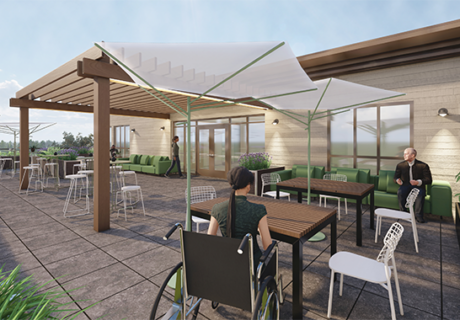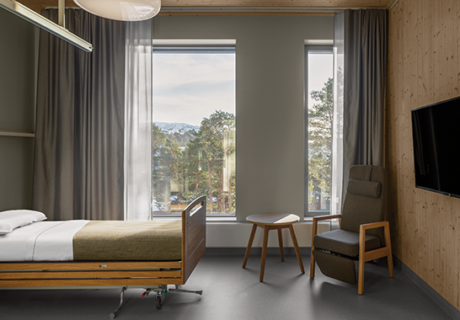FIRST LOOK: The Center for Obesity and Diabetes
The Center for Obesity and Diabetes, or Centro Medico de Diabetes, Obesidad y Especialidades (CEMDOE) in Santo Domingo, Dominican Republic, has a social mission to decrease the prevalence of diabetes and improve the health of its patients. The 80,000-square-foot center, designed by Perkins+Will’s Miami office, provides a variety of services, including advocacy, community awareness, and holistic prevention and treatment strategies.
Located in the Dominican Republic’s largest city and capital, CEMDOE is an integrated medical institution encompassing outpatient clinics, medical research and disease management. The program includes foot, diabetic and specialty clinics, as well as dialysis, an observation unit, research, conference/education spaces, and a cafeteria. It’s scheduled for completion in fall 2018.
Designed as a series of active pedestrian zones, the building and landscape promote health and well-being. An internal courtyard serves as a healing space where patients can undergo physical rehab and therapy in a serene meditative environment. The building includes light-infusing elements via light wells and skylights. And strategic façades provide an abundance of controlled natural light to minimize artificial lighting costs, while maintaining building efficiency.
The facility maximizes operational efficiency. For example, the conference center and café are located on the ground level with access to the courtyard. The clinics are designed in modules to allow future flexibility, where a multidisciplinary core supports the exam rooms, promotes collaboration and has a light well bringing in natural light.
Patients at CEMDOE are treated by a multidisciplinary healthcare team that includes doctors, nurses, nutritionists, social workers and psychologists. The design of the center supports this team-based environment with a flexible and modular clinical pod, where diabetic and specialty clinics are co-located. Each pod contains eight exam rooms around a central staff working area (also known as the “core”). Patients enter exam rooms from one side and staff enter from the “core,” where the multidisciplinary care team can connect and share their input on proactive health strategies.
The sustainable elements of CEMDOE are interwoven in its design. The facility is positioned on the site to maximize energy consumption. Parking spaces implement a natural green paving system that provides better storm-water management. Emissions are reduced by 70 percent through a rooftop installation of a 144kW photovoltaic array. The project will conform to the 2030 Challenge, a voluntary initiative that calls for all new developments to be carbon neutral.







